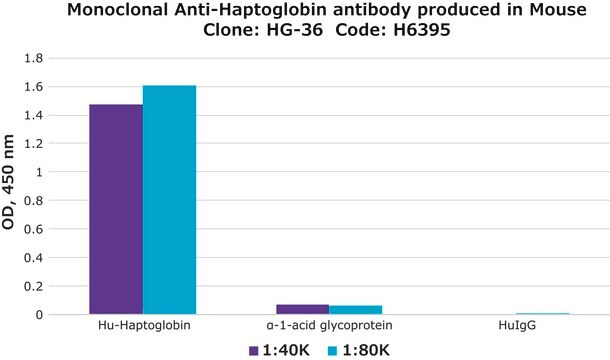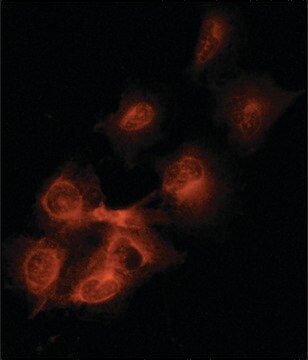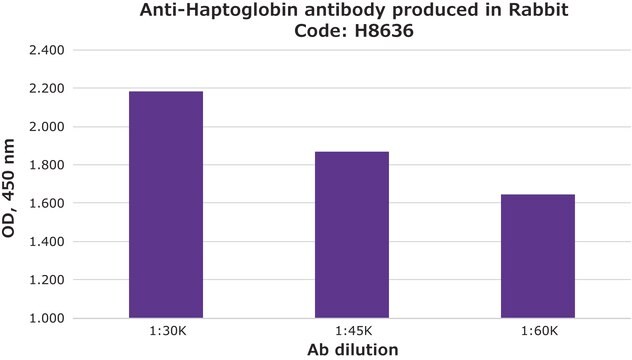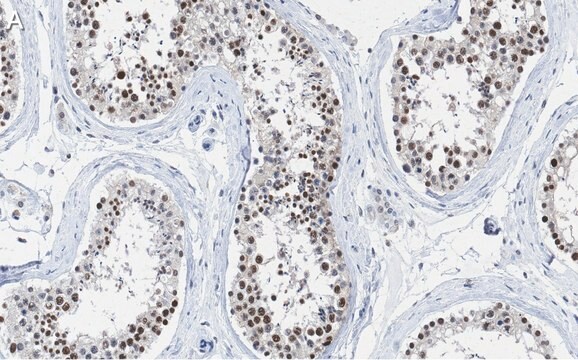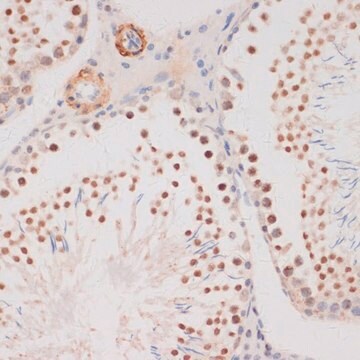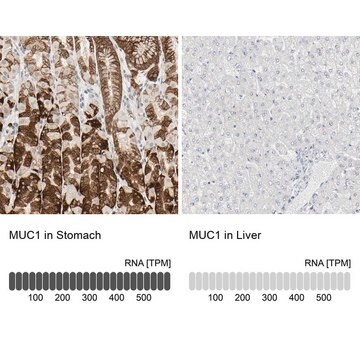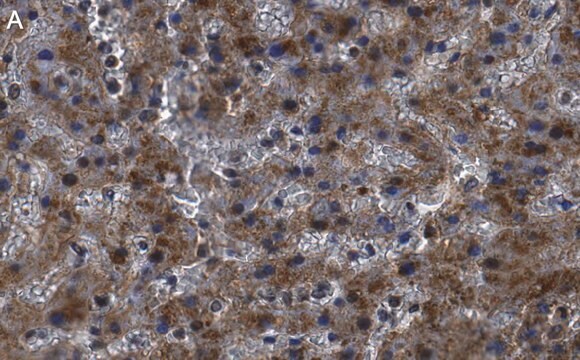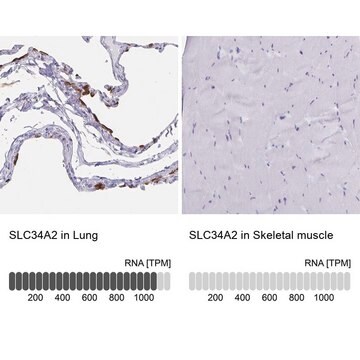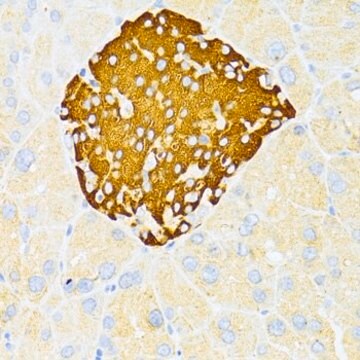SAB4200781
Anti-Haptoglobin antibody, Mouse monoclonal
clone HG-36, purified from hybridoma cell culture
Sinónimos:
Anti-HP, Anti-Zonulin
About This Item
Productos recomendados
biological source
mouse
Quality Level
antibody form
purified from hybridoma cell culture
antibody product type
primary antibodies
clone
HG-36, monoclonal
form
buffered aqueous solution
species reactivity
human
packaging
antibody small pack of 25 μL
concentration
~1.0 mg/mL
technique(s)
ELISA: 0.2-0.4 μg/mL using 10 μg/ml human haptoglobin for coating
dot blot: suitable
immunoblotting: suitable
immunoprecipitation (IP): suitable
isotype
IgG1
UniProt accession no.
shipped in
dry ice
storage temp.
−20°C
target post-translational modification
unmodified
Gene Information
human ... HP(3240)
General description
Monoclonal Anti-Haptoglobin specifically recognizes the three types of human haptoglobin (types 1-1, 2-1, and 2-2) The antibody recognizes both purified and haptoglobin in human serum, and shows no crossreactivity with human IgG, transferrin, C-reactive protein, α-1-acid glycoprotein, albumin, hemoglobin, or bovine, goat and sheep serum haptoglobin.
Immunogen
Application
Physical form
Other Notes
¿No encuentra el producto adecuado?
Pruebe nuestro Herramienta de selección de productos.
Storage Class
12 - Non Combustible Liquids
wgk_germany
WGK 1
flash_point_f
Not applicable
flash_point_c
Not applicable
Elija entre una de las versiones más recientes:
Certificados de análisis (COA)
¿No ve la versión correcta?
Si necesita una versión concreta, puede buscar un certificado específico por el número de lote.
¿Ya tiene este producto?
Encuentre la documentación para los productos que ha comprado recientemente en la Biblioteca de documentos.
Nuestro equipo de científicos tiene experiencia en todas las áreas de investigación: Ciencias de la vida, Ciencia de los materiales, Síntesis química, Cromatografía, Analítica y muchas otras.
Póngase en contacto con el Servicio técnico